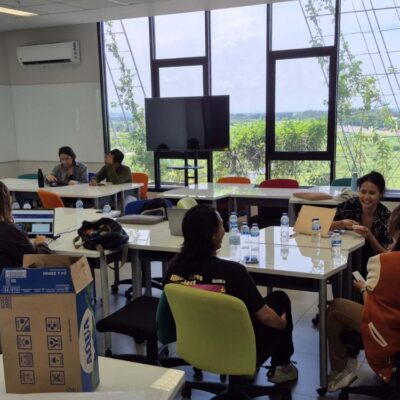The recent COVID-19 pandemic has led to a crisis for international students and the financial health of Australia’s public universities. The situation relating to the international students is a significant element within a wider crisis of Australia’s higher education system.
As the significant revenue from international students has fallen, universities have cut back on staff and programs. Based on the assumption of a 20 percent drop in international student enrolments there will be a $3.3 billion loss of revenue increasing to $4.3 billion in 2021.
But the more important point is the Australian government’s treatment of international students. International students have been excluded from government assistance available to others, such as the JobKeeper wage subsidy and JobSeeker payment. This has led to an increasingly desperate situation for international students. The government’s treatment of them is a calculated act with no regard for their wellbeing. This is despite the fact that most universities and the federal government have for years treated international students as ‘cash cows’.
What are the broader drivers of this crisis? What is behind the government’s callous response to the welfare of international students?
Why international students play a crucial role in Australia’s public universities: The rise of the higher education regulatory state
In the 1980s, John Dawkins, the then Minister of Education in the federal Labor Government, set in train policies that led to the emergence and consolidation of a higher education regulatory state that governs Australia’s public universities.
Regulatory governance refers to the development of a regulatory infrastructure that attempts to steer universities toward a more competitive and market system of public higher education through the use of administrative rules, regulation, and standards. The rules govern the competitive allocation of funds and student financing, and create audit architectures to monitor the performance and quality of institutions.
A crucial component of this regulatory architecture is the scaffolding it provides for the expansion of full fee-paying international student enrolments. The regulatory framework includes the Education Services for Overseas Students Act 2000, which defines the regulatory standards for quality assurance of international students, and sets standards for educational institutions that provide courses and degrees for international students. Under this framework, the national regulator, the Tertiary Education Quality Standards Authority, supervises and enforces these standards.
These standards for international students intersect with migration and employment regimes by setting the conditions for work during and after study in Australia, thereby creating a distinctive category of temporary workers. It is these regulations and rules that I define as the internationalisation of the higher education regulatory state.
The revenue from international students has been crucial for offsetting declining federal government support for public universities. In this context, governments have regarded international students as a primary source of university income to be regulated and monitored through the higher education regulatory state. Moreover, cross-subsidisation from international students in courses such as commerce and business has been crucial to universities’ efforts to sustain research, particularly within the research-intensive Group of Eight leading Australian universities where research staff have been consistently underfunded by the government. Further the effective separation of teaching and research funding under the higher education reforms passed by federal parliament in 2020 will further ratchet up the research funding squeeze on research intensive public universities.
Moreover, the full indirect costs of research grants—from organisations such as the Australian Research Council and the National Health and Medical Research Council—are only partially funded by the government. Funding is needed therefore for infrastructure and apparatus such as laboratories and research equipment. Fees from international students have been a way of filling this gap.
At the core of the crisis is international students’ hybrid status as workers and students
International students are allowed to engage in limited work under their visas—up to 40 hours a fortnight and unlimited time during university holidays. It has been estimated that over 40 percent of students work, and among these, a significant majority are students of Indian heritage. For many of these students, employment is essential in order to meet their basic needs. We have seen in the current COVID-19 pandemic that the absence of income support has a significant impact on international students, especially those from India.
One effect of this hybrid status—which is a product of the regulatory state—is that student participation in the labour market is often characterised by low wages and conditions. According to a recent report by the University of New South Wales and the University of Technology Sydney it has been estimated that many international students are paid less than the minimum wage and, more importantly, were unlikely to complain or take action about the situation. But students have reported bullying and sexual harassment in many service- or hospitality-oriented outlets.
In short, the internationalisation of the higher education regulatory state provides the basis for often precarious work. To gain a comprehensive understanding of the current crisis we need to tease out the connections between the institutional rules and their social and economic effects.
Various forms of post-study temporary migration can become a pathway to permanent residence
After post-study work programs were first introduced by the Government led by former Prime Minister John Howard in the late 1990s, the nexus between education and migration has been a central feature of Australia’s education and migration regime. Since then it has been extended beyond public universities to the vocational training sector.
The most important consequence of this nexus is the creation of new forms of temporary migration that persist even after students complete their studies. The innovative work of scholars has documented how the temporary status of many visas has been central to the migration experience. This ‘temporariness’ of migration, has a strong bearing on conditions and rights within the labour market. There is evidence of non-compliance with special labour standards and conditions for those on temporary migration visas, especially in the care and hospitality sectors. These studies link the precarious position of temporary migrant workers and employment practices. Moreover, as clearly illustrated in the case of international student workers, temporary migrants have limited rights or access to government assistance or redress.
Institutionalised patterns of racism play a central role in reinforcing the structural weaknesses of student workers or migrant workers within the labour market, and this is at the root of their exclusion from programs such as JobKeeper and JobSeeker. A useful framework for analysing these questions of race and labour markets is the notion of ‘raced markets’ recently introduced by scholars Lisa Tilley and Robbie Shilliam. The notion of ‘raced markets’ seeks to examine how racial differences shape the very way labour markets operate. It is for this reason, that we need to consider institutionalised racism not simply as individual prejudices, attitudes or beliefs, but as something that is intrinsic to the operation of labour markets.
The notion of raced markets in relation to international students is used by scholars Xianlin Song and Greg McCarthy in their work on international students. A central aspect of their argument is that the construction of ‘cultural differences’ by universities and government agencies has been central to the governance of student mobility. My argument is that these ‘raced markets’ are crucial to understanding the work conditions of international students as well as other temporary migrants. As such, it is precisely their status as temporary workers—created and enforced by the higher education regulatory state—that has contributed to the operation of these markets. It underlines how patterns of systemic racism are central to the operation and functioning of the labour market in key service industries.
By policy design and choice, international students fall into a grey area of employment and study—a consequence of the intersection of education and employment regimes. This is crucial because the broader point here is that the international higher education regulatory state which has emerged over the last three decades is not simply a set of institutional rules but one where operation is linked, albeit indirectly, to the labour market where international students are subject to precarious conditions of work and have limited employment rights. This needs to be understood in the wider context in the way Australia’s migration program has been transformed over the last few decades with a significant number of migrants on various visa classes including those on post-study visas, as well as those with official status as Australian residents.
To meet the challenge of the current crisis we need to ensure that international students, as well as other temporary workers, are entitled to full protection and rights, not just as students but also as workers.
Beyond Australia’s borders: International students and the regional political economy
The education/migration regulatory state reaches beyond national boundaries to combine with economic transformation in countries such as India and China.
Many international students and their families, particularly in India, take on debt in order to finance their children abroad. The financial burden borne by families has become increasingly important in the financing of overseas study and, as stated earlier, the students themselves are often required to work while they study to help pay off their debt, as well as the fees of the education agents who facilitate the study programs.
It is crucial therefore to understand how the higher education regulatory state combines with and intensifies broader transnational processes of debt and finance. The distinctive hybrid form of student/migrant labour is a consequence of the uneven development of the regional capitalist economy leading to the combination of different forms of labour within the labour market. Here, uneven development refers to the different patterns of capitalist development (including the relationship between workers and owners of capital as well as other groups) and forms of incorporation into the global economy that produce unevenness in income and profit, such as through export-oriented growth. Such patterns of capitalist development then shape how students and their families finance their education. For example, the financing of students from China is dependent on China’s high saving rate. This high saving rate is a product of the way social safety nets have been eroded as a result of the shift to an export-oriented economy. The key point is the way Australia’s higher education regulatory state combines these different forms of capitalist development. It is for this reason,that the underlying process of uneven and combined development—to use a political economy term—is pivotal to the operation of the international education sector.
An effect of this logic of the migration/education regulatory nexus is that it provides the conditions for precarious work and the exclusion of international students from legal protection because they fall between the cracks, due to their status as student and workers. It is not simply a matter of legal exclusion, but a political choice.
It is clear that we are now seeing a significant transformation in the underlying global capitalist economy that has underpinned the internationalisation of the higher education regulatory state. In particular, there are three key elements to this emerging crisis:
- The sharpening of bilateral political and economic tension between China and Australia that may lead to reduced flows of international students.
- The intensifying populist rhetoric on international students and their role in shaping university finances will make it difficult to return to the pre-COVID-19 period. This makes it less likely that the government will support or promote a return to pre COVID-19 levels. The populist rhetoric has been reinforced by the deliberate callousness with which international students have been treated by the federal government. The significant financial and institutional restructuring that the government is applying to universities seems to preclude policy intervention to support and protect current international students.
- The possibility of expanding the recruitment of international students from nations such as India will be reduced by India’s current economic difficulties.
Image: International students in Melbourne. Credit: Alpha/Flickr




